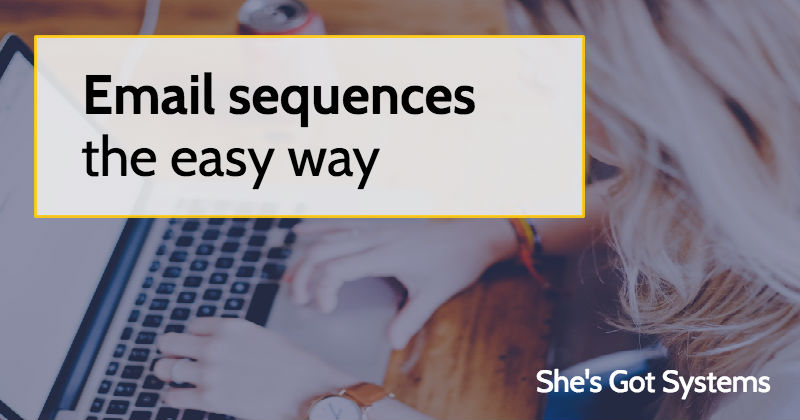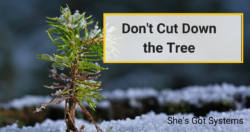It’s not hard to find a tutorial on how many emails you need for a launch, promotion, pre-launch, sales sequence or event announcement, but that’s usually where the help ends.
What about all the work that has to happen once you decide what emails you need to write?!
Well, I’ve got you covered today with 3 simple tricks I use to plan and write my email sequences for any circumstance.
First, comes the planning
It’s true, you need to have a plan around your email content, especially for a launch. So pull out your calendar, power up Asana and decide when your launch will open, close, and all the important dates in between.
This might mean listing out when the early bird ends, last day to get bonuses, live calls you’re doing, special guests you’re interviewing, and especially the last 24 hours to buy.
I list all these dates out chronologically in one doc and include the day of the week. After all, not a lot of people are checking emails to attend a live call late on a Saturday night, so you may still need to adjust dates.
Then I look at this calendar for holidays or observances that I need to take into account. If it’s a bank holiday, for example, that might mean my audience will have their kids off school and be less willing to sit in on a 2-hour workshop. Also on that site are holidays for most countries around the world, so you can check the dates across the biggest markets that make up your audience.
Now that I know what’s happening in MY side of the launch, I turn it around to the audience. What do they need to know? What communication should I send and when?
I simply list out all the emails I’m thinking of sending, again in chronological order with the subject of each email. I’ll never put in “email Tuesday” without a purpose. The subject can be short too (it’s not the subject LINE), such as “early bird ending” or “webinar replay available.”
And that’s it! Go forth and write your emails!
Just kidding! Planning what you’re going to send is only the first step.
Second, draft your content the smart way
It’s easy to say “write the emails” but without some guidance, that chore usually gets pushed to the bottom of your to do list.
Once I have my chronological list of emails with a general subject, I’ll create a new Google doc for the email sequence. All emails go in one doc to keep it streamlined, and each email gets a number.
Then I’ll do a little cheat-sheet for each email like such:
Email #4 The cart is open, 24 hour fast action bonus starts now
Send to: Everyone who signed up for the free webinar
Send on: Tuesday, Oct 18th at 9am PT
Template: Sales email template (with program banner at the top)
Subject line: You don’t want to miss this deal! (24 hour countdown starts now)
Pre-header text: Open, open, open! Special offer inside for (name)
Text of the email:
Hi (name),
I can’t wait a minute longer to share…
If at all possible, create a time block of 3-5 hours to write all these emails in one go. It’ll help with your flow of messaging, consistency and get it all done quickly! Remember this is just the first draft so you’re not committed to everything here just yet.
Now, as I write these emails, there’s going to be information I need or details to decide later on. Instead of stopping to figure it out, I use the highlight tool in Google Docs to remind myself.
That might mean using “Hi (name)” as a reminder to fill in the code for the lead’s first name or “click here to register” to remind myself to grab the registration link.
Want to know the BEST part about this trick? You don’t have to be the one to fill it all in! If you’ve got a team helping, this is a great way to focus on your area of expertise (communicating about your great offer) while leaving the details to someone else.
The important task here is to write. Don’t worry about the set-up, images, links or anything just yet, if the emails are written in advance, you’ve accomplished 80% of the hard stuff right there.
Now, I wouldn’t recommend just slapping it up, next comes the fun stuff!
Third, polish, prettify and publish
As I’m writing, I’ll often get ideas for how to make the emails more visual, such as including a button linking to the sales page, a graphic or quote, even photos that are relevant to the story of the email. Depending on what you’re selling, you may also include testimonials, product shots, event location images, a countdown timer, links to social media, video images… the possibilities are endless!
I incorporate these as I go through the written emails a second time, and it might look like this:
Our early bird bonus is ending tomorrow so don’t miss out on the 60-minute strategy call with me to create your next… [insert square graphic “Bonus expires in 24-hours!” with pic of me and brand colors]
-or-
Just imagine… you’re sitting here on the beach with your journal and a cold beer, meditating on where the next year of your business will take you while some people are sitting in a freezing cold conference room taking notes on powerpoint slides, wondering when the next break begins… [side by side image of a beach chair in the shade vs. typical conference room]
Again all of these are highlighted so I’ll remember to request that those graphics get created by the team.
Going through all the emails in one time block will allow you to edit for consistency and ensure that you’re keeping the graphics consistent. I highly recommend using the same or similar headers, buttons and branding throughout for consistency.
Once the emails are good enough (aka written and polished), I need to see them in an actual email, so my team will get the assignment to add them to our CRM and send me test emails of each one. I’ll tag a team member into the Google Doc when the emails are ready and ask for 2 things when receiving test emails:
- Every subject line must have [test] at the front so I don’t freak out and wonder if it went to the whole list early and not completed, and,
- Send me the whole sequence at once so it can be reviewed together instead of one at a time.
I may still make edits later on as the launch continues and feedback comes in, but for the most part, all these emails can be finalized and done weeks or even months before a launch.
If you’re not working several months out, that’s okay, just setting up the Google Doc with some details and highlighting what needs to be added will be a huge help in organizing your emails.
Final tip: if you have multiple sequences, put each distinct sequence in a separate doc. One for affiliate partners, one for leads, one for sales, etc. It’s so much easier to keep organized and not get confused about who and when and what list you’re working on at the moment.

 Don’t Cut Down the Tree
Don’t Cut Down the Tree On Writing Books + November Deals
On Writing Books + November Deals Finding the missing piece
Finding the missing piece